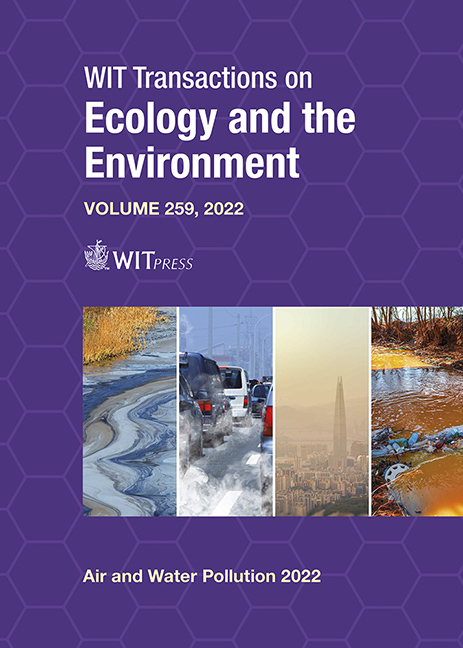ASSESSMENT OF CUMULUS PARAMETERIZATION SCHEMES IN MODELING METEOROLOGY ASSOCIATED WITH AN AIR POLLUTION EVENT IN THE ANDEAN REGION OF ECUADOR
Price
Free (open access)
Transaction
Volume
259
Pages
12
Page Range
3 - 14
Published
2022
Paper DOI
10.2495/AWP220011
Copyright
Author(s)
RENE PARRA
Abstract
Air quality results from the interaction between emissions and meteorology. When significant changes occur, such as a sudden drop in temperature, atmospheric stability can persist, promoting air pollution. Between 7 and 9 November 2020, there was a significant drop in temperature in Cuenca (2,500 masl), a city located in the Andean zone in southern Ecuador. At noon, decreases of up to 700 W m–2 and 10°C were recorded in the solar radiation and temperature levels, respectively, compared to the first days of the month. At the same time, increments of around 20 μg m–3 in PM2.5 hourly concentrations were recorded. Cumulus convection is a process directly related to cloud formation and, therefore, to solar radiation and temperature. We simulated the meteorology from 2 to 11 November 2020, with the Weather Research and Forecasting model (WRF 4.0.3), with a resolution of 1 km, without cumulus parameterization, and with nine options for this component. Modeling without this parameterization provided acceptable results for solar radiation and temperature. However, this option overestimated wind speed at the surface. Globally, option 10 (Kain–Fritsch Cumulus Potential) presented the best modeling performance. Options 3 (Grell–Freitas) and 6 (Tiedtke) were better or similar than modeling without cumulus parameterization. None of the options adequately modeled the temperature and solar radiation on 9 November 2020, the day on which the lowest values of these variables were observed, suggesting that the model will not provide proper values for days with sudden decreases in solar radiation and temperature. Because most parameterized effects, such as the boundary layer, convection, microphysics, and surface schemes, are closely linked, it is necessary to study their influence. It is also necessary to assess the potential benefit of data assimilation and even the development of dedicated schemes for numerical simulation in the equatorial zone of the Andes.
Keywords
Cuenca, cumulus convective, atmospheric forecasting, air quality forecasting, atmospheric stability




